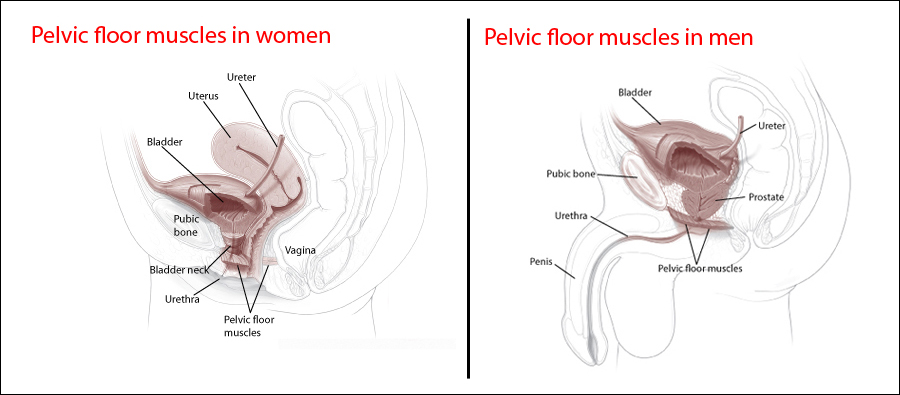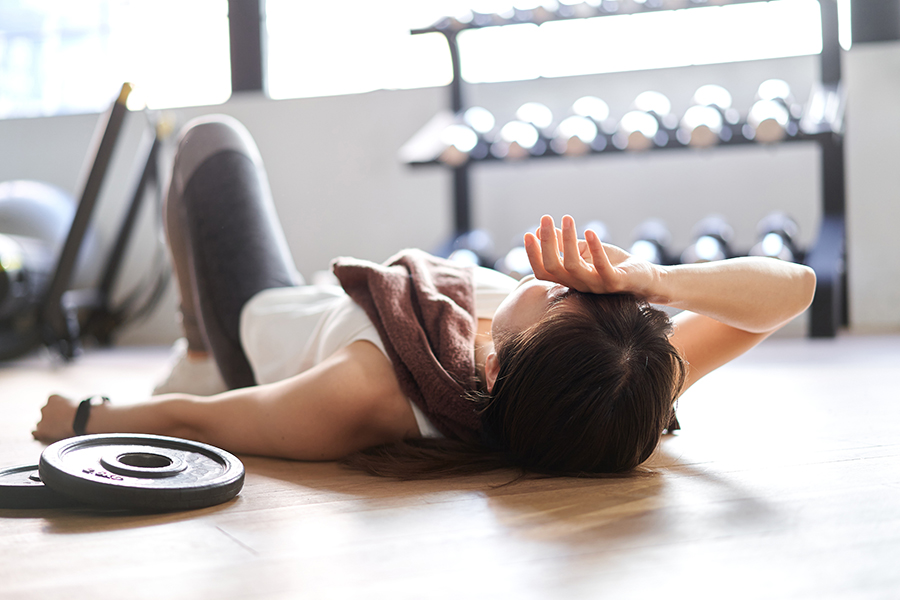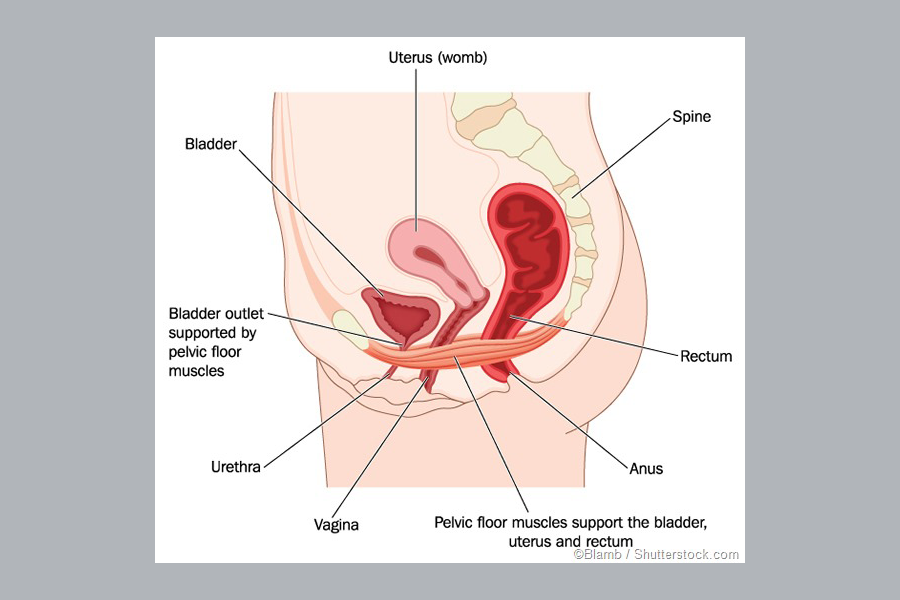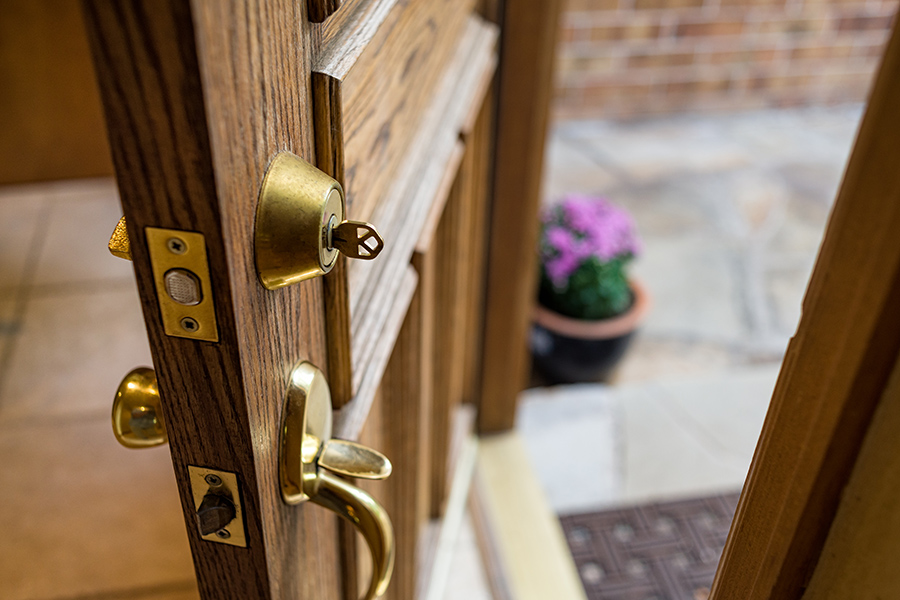Kegel exercises strengthen the muscles – called the pelvic floor – that support your bladder, uterus, and bowel (large intestine). These exercises were developed in the mid-20th century by Dr. Arnold H. Kegel, an American gynecologist, as a nonsurgical way to prevent people from leaking urine. A strong pelvic floor can help individuals who have problems with urine leakage or bowel control.
You are more likely to experience pelvic floor issues if you:
- Are older
- Are overweight
- Have experienced pregnancy and childbirth
- Have certain types of brain and nerve disorders that impact bladder/bowel control
- Have had gynecologic surgery (women)
- Have had prostate surgery (men)
Although the exercises themselves are simple, finding the right muscles to exercises isn’t. Many people inadvertently work their abdominal, buttock, or inner thigh muscles instead of their pelvic floor. While all exercise is beneficial, if you are working the wrong muscles, you won’t reap the unique benefits of Kegel exercises.
Where and When to do Kegel Exercises
Kegel exercises can be done any time you are sitting or lying down. For example, you can do them when you are eating, sitting at your desk to work, driving, or when you are resting or watching television. Since all exercise is most beneficial when practiced consistently, choose a time and location when you can consistently remember to practice. This could be during your daily work commute, at stop lights, during your favorite TV shows, or at a certain meal.
How to Isolate your Pelvic Floor Muscles
Several techniques can be used to find the right set of muscles to exercise.
Techniques for Women and those Assigned Female at Birth (AFAB):
- Pretend you are trying to avoid passing gas.
- Pretend to tighten your vagina around a tampon.
Techniques for Men and those Assigned Male at Birth (AMAB):
- Pretend you are trying to avoid passing gas.
- While urinating, try to stop your urine stream.
Once you have isolated the correct muscles, you’ll feel the contraction inside your body toward the back of the pelvic area, rather than in the front of the pelvis.
For individuals who are intersex, non-binary or transgender, note that the reference to men and women below is a medical illustration of typical sex organs and not reflective of your gender identity. If your physiology is not accurately represented, please refer to the illustration with genitalia most relevant to you.

How to Do Kegel Exercises Step-by-Step
1. Choose your position. If you are new to Kegel exercises, you may find it easiest to begin on your back. Lay down in a comfortable position, fully relax your body, and try the tips above to isolate your pelvic floor. Once you have the hang of it, you can complete Kegel exercises in sitting or and standing positions.
2. Contract and relax
- Contract your pelvic floor muscles for 3 to 5 seconds. As you improve, you can extend this time.
- Relax for 3 to 5 seconds. If you are contracting for longer stretches, rest for longer stretches as well.
- Repeat the contract/relax cycle 10 times.
3. Keep other muscles relaxed. If you are working other muscles, you’re not productively working your pelvic floor. Try to avoid contracting your abdominal, leg, or buttock muscles, or lifting your pelvis. Place a hand gently on your belly to detect unwanted abdominal action.
4. Extend and diversify. Like any muscle group, as you build strength you will be able to do more. Gradually increase the length of contractions and relaxations. Work your way up to 10-second contractions and relaxations. You can also vary the pace: Long, slow contractions with slow holds work the muscles differently than rapid pulses. Practice short, 2 to 3 second contractions and releases (sometimes called “quick flicks”) as well as longer ones.
5. Be consistent. Aim to complete at least 30 to 40 Kegels every day. There’s no need to do them in a block; divide your exercises and spread them throughout the day. Since these are discreet exercises that can be practiced anywhere, try to sneak in a few when waiting at a stoplight, riding an elevator, or standing in a grocery line.
Avoiding an Accident
If you’re experiencing stress incontinence, doing one or more Kegels before a “trigger” (cough, sneeze, laugh etc.) may help prevent unwanted leakage. For those with urge incontinence, practicing kegels after the sudden urge hits may help get you to the restroom in time.
You may also be interested in:
- How Diet Affects Bladder Control
- Kegel Exercises to Stop Urine Leaks
- Why Kegels Are Important
- Eight Tips for Bladder Health
- Lifestyle Changes that Help Manage Incontinence
- Video: 7 Expert Tips About Incontinence
Resources include:






















